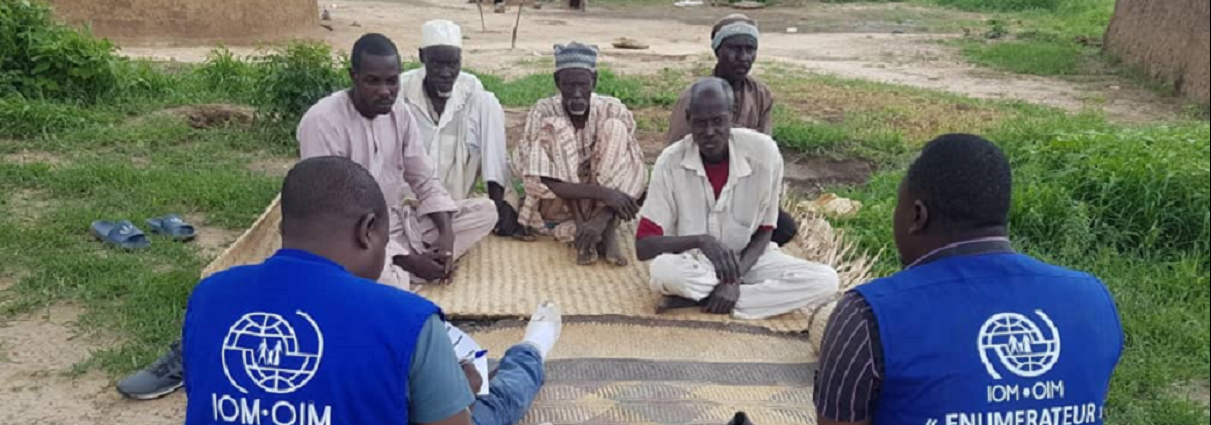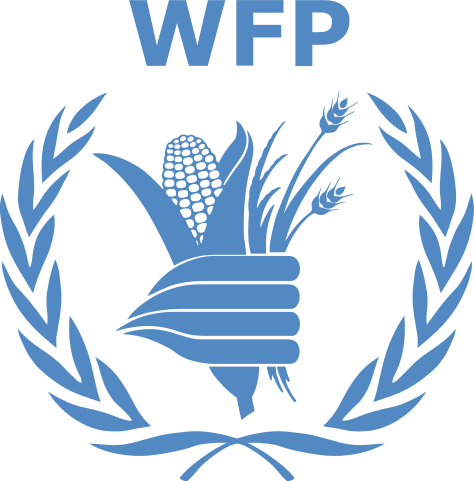IOM Vision
The different nature of on-going crises in Cameroon requires IOM to adapt its response strategy around the specific contexts and vulnerabilities of crisis-affected populations. Needs range from immediate life-saving assistance in the North-West and South-West as well as the Far-North region to protracted recovery specifically in the Far-North. IOM, in partnership with key stakeholders, seeks to improve the living conditions and suffering of the most vulnerable displaced populations through the provision of tailored lifesaving and protection (including Mental Health and Psychosocial Support) assistance. Durable solutions to displacements will be prioritized in targeted regions in the Far-North whilst reintegration, community stabilization and transition interventions will be essential in addressing sources of tension and re-establishing stability and trust in conflict-affected communities.
Objective
Saving lives and protecting people on the move
IDPs, vulnerable host communities and IDP returnees.
IOM aims to provide a better understanding of the population movements and evolving needs of conflict-affected populations in the Far-North, South-West and North-West regions of Cameroon through the regular collection, processing and dissemination of data on displacements.
The most vulnerable IDPs identified through vulnerability assessments and in need of shelter/non-food items (NFI) assistance in the North-West, South-West and Far-North will be provided with tailored support. Interventions will be in line with the Shelter/NFI cluster guidelines. The intervention modalities (direct distributions, conditional cash, vouchers, among others), as well as the targeted populations (IDPs in sites, collective centres, in host communities), will depend on the local context and vulnerability criteria.
The following mental health and psychosocial support (MHPSS) activities (https://www.iom.int/mhpsed ) will target conflict-affected populations in the North-West, South-West as well as the Far-North region of Cameroon:
- MHPSS assessment to identify needs, resources and key stakeholders;
- Implement mental health promotion activities in target communities;
- Establish inter-disciplinary teams to carry out community-based MHPSS activities (art-based, sports and play, socio-cultural) to address psycho-social needs and strengthen community networks in targeted communities;
- Strengthen local capacities to carry out community-based MHPSS activities.
- Identify/establish referral pathways to improve access to timely MHPSS services to conflict-affected populations.
Objective
Driving solutions to displacement
IDPs, returnees and vulnerable communities.
Whilst the available Displacement Tracking Matrix (DTM) data highlights the increasing number of returnees (former IDPs) in the Lake Chad Basin over the past two years (including in the Far-North of Cameroon), the implementation of the stability index in the DTM operations aims to shed more light on what assistance is required to ensure durable returns, who needs it and where. This tool serves as a measure of stability in return areas and identifies "pockets of stability" which will enable actors to plan for a more informed and appropriate programming.
In the framework of the Humanitarian Development Peace Nexus (HDPN) TaskForce which was set-up in Cameroon in August 2019, key stakeholders (including IOM and governmental counterparts) are working on the development and implementation of a durable solutions strategy for populations affected by forced displacements. Once the strategy has been finalized and approved by governmental counterparts, IOM aims to contribute to the implementation of the durable solutions strategy in the Far-North and will plan activities in the following sectors of intervention:
- Access to basic social services;
- Access to durable livelihood and economic opportunities;
- Protection, social cohesion and local governance.
The communities of Northern Cameroon have been devastated by the protracted and on-going conflict with Boko Haram. In order to de-escalate the conflict and create conditions conducive to social stability and human security, interventions aim to strengthen community resilience by promoting social cohesion and economic empowerment, targeting the communities most affected by the Boko Haram crisis in the Far North region of Cameroon. The following type of activities will be implemented:
- Participatory workshops to develop capacities of community actors, including representatives of various community groups, civil society and local governance structures, to identify, develop and implement action plans that respond to collective needs on durable solutions, including in relation to security and community stabilization;
- Democratic dialogue between community leaders and local (administrative and traditional) authorities on security concerns, conflict prevention and responses;
- Select and train community leaders on conflict prevention and resolution skills;
- Participatory identification and prioritization of critical community infrastructure projects to enhance social cohesion;
- Implementation of community-based reconciliation activities such as rehabilitation of socio-economic infrastructure to promote civic engagement and social cohesion;
- Provide support to the most vulnerable population groups in accessing livelihood and economic opportunities (through vocational training, income-generating activities and cash-for-work projects).
Objective
Strengthen preparedness and reduce disaster risk
At risk communities as well as Governmental counterparts, the Resident Coordinator, UNDP and multi-disciplinary experts in disaster risk reduction and climate change adaptation.
In line with the Sendai Framework priorities and in collaboration with Capacity for Disaster Risk Reduction Partnership (CADRI), IOM Cameroon works with multiple stakeholders, including governmental counterparts, the Resident Coordinator, UNDP and multi-disciplinary experts in disaster risk reduction and climate change adaptation, to strengthen the country's risk information systems, prioritize risk reduction in national and local plans and enhance preparedness systems. Activities and measures will be designed to avoid existing and new disaster risks. In collaboration with CADRI, the following actions and activities will be prioritized in Cameroon this year:
- Mapping and analysis of existing stakeholders, measures, capacities in-country as well as gaps in terms of disaster prevention;
- Development of a Disaster Risk Reduction action plan/national strategy in collaboration with pertinent governmental counterparts (including the Civil Protection Division);
- Capacity-building of relevant stakeholders on disaster risk reduction measures;
- Setting-up coordination forums/platforms engaging different specialized stakeholders, including governmental counterparts, UN agencies, NGOs and the private sector on the subject of disaster risk reduction.
Cameroon
The map used here is for illustration purposes only. Names and boundaries do not imply official endorsement or acceptance by IOM.
Figures are as of 31 December 2023. For more details of IOM's operational capacity in country, please see the IOM Capacity section.








